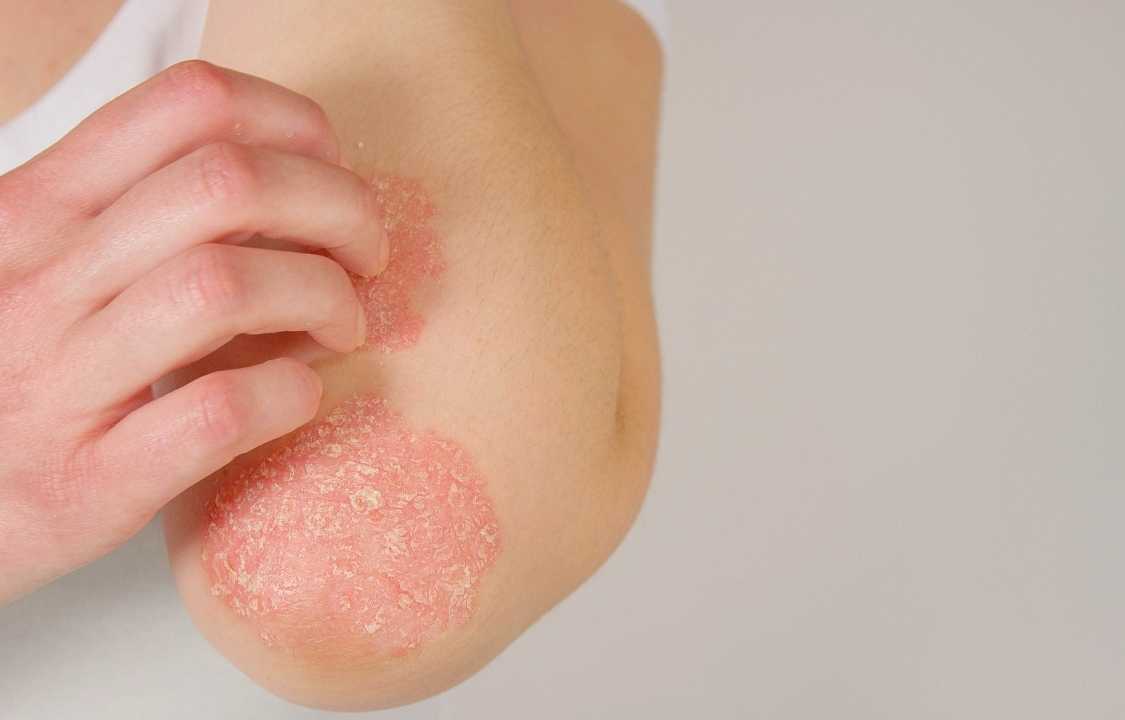Living with plaque psoriasis can be challenging, especially when the visible symptoms draw unwanted attention. However, it’s important to remember that you’re not alone in this journey. According to a June 2021 study published in JAMA Dermatology, more than 7.5 million American adults aged 20 and older are living with plaque psoriasis. While this condition may manifest in distinctive ways on different individuals, understanding its common characteristics, variations, and available treatments can provide valuable insights and support for those affected.
The Appearance of Plaque Psoriasis: Red, Raised, and Scaly
Plaque psoriasis is most renowned for its appearance as red, raised, and scaly patches on the skin. These patches often manifest on areas like the elbows, knees, and buttocks, although they can affect various parts of the body. Dr. Adam Friedman, a professor of dermatology at George Washington School of Medicine and Health Sciences, explains that these classic symptoms make plaque psoriasis relatively easy to diagnose during a dermatological examination.
To comprehend why psoriasis appears scaly, it’s essential to delve into its underlying mechanisms. Individuals with plaque psoriasis possess an overactive immune system, prompting their skin cells to undergo rapid growth. In a matter of three to four days, these skin cells multiply at an accelerated pace. However, the excess cells do not shed as quickly as they accumulate, resulting in the formation of plaques and scales on the skin’s surface.
These scales can vary in size and may form as single patches, separated by healthy skin, or as clusters that merge to cover more extensive areas. Dr. Robert T. Brodell, the chair of the department of dermatology at the University of Mississippi Medical Center, elaborates that the scales are often referred to as “micaceous” due to their resemblance to the mineral mica. If one were to lift a psoriasis scale, it would yield a broad, white flake, distinct from the fine, non-adherent scales seen in conditions like dandruff.
Variations in Plaque Psoriasis Across Skin Tones
The appearance of plaque psoriasis can differ depending on an individual’s skin tone. Dr. Brodell emphasizes that if you were to biopsy plaque psoriasis in patients of all races, the cellular characteristics would be identical. However, the visual presentation may vary. For example, individuals with Black or African American skin tones may notice that areas of inflamed skin appear darker.
This coloration difference arises from the inflammatory response, which triggers the production of brown melanin pigment in the deeper dermal layer beneath the psoriasis-affected skin. Consequently, the scales may exhibit a dark hue, distinct from the white micaceous appearance seen in lighter-skinned individuals.
Dr. Friedman concurs, noting that psoriasis can manifest differently on various skin tones. On lighter skin tones, the scales often appear pink and silvery white, whereas on darker skin tones, they tend to adopt a more purple and yellowish hue. Additionally, in some cases, psoriasis may resemble wart-like growths on darker skin.
However, certain features of plaques and scales remain consistent across all forms of psoriasis and skin types. These shared characteristics include the well-defined borders of affected areas, elevated texture relative to normal skin, dryness with a “stuck-on” appearance, and persistent redness or darkness.
The Intersection of Irritated Psoriasis and Eczema
Psoriasis can be intensely itchy, prompting affected individuals to scratch the affected areas. Prolonged scratching and rubbing can lead to inflamed psoriasis, which may display features resembling chronic eczema. The more an individual scratches, the thicker the affected skin becomes.
Distinguishing between irritated psoriasis and eczema often requires the expertise of a dermatologist. Subtle differences in the rash’s appearance, location, and distribution, coupled with an assessment of joint stiffness (associated with psoriatic arthritis), enable dermatologists to differentiate between the two conditions. These diagnostic clues often render biopsies or blood tests unnecessary.
Common Sites Affected by Plaque Psoriasis
While plaque psoriasis can theoretically affect any part of the body, certain areas are more commonly afflicted. According to the American Academy of Dermatology Association, plaque psoriasis often appears on the following areas:
- Knees
- Elbows
- Lower Back
- Scalp
Dr. Brodell explains that the propensity for psoriasis to develop on extensor surfaces like the elbows and knees may be attributed to the frictional stress or rubbing these areas endure. Notably, the extent to which different areas of the body are affected varies among individuals. Some individuals may experience psoriasis in a single body region, while others may have multiple areas affected. There are even cases where patients exhibit nail pitting, characterized by small depressions on the nail surface, years before psoriasis symptoms emerge on other parts of the body.
Treatment Advancements for Plaque Psoriasis
The management landscape for plaque psoriasis has evolved significantly in recent years, offering hope and relief to those affected. Dr. Friedman highlights that there is no longer a question of how to treat plaque psoriasis but rather a choice of which treatment approach to adopt, given the array of options available.
Once treatment commences and effectively addresses a flare-up, Dr. Brodell notes that the plaques often disappear, leaving the skin flat. However, residual redness may persist on lighter skin tones, while darker skin tones may exhibit residual darkness. This post-treatment pigmentation alteration can endure even after biopsy results reveal no evidence of skin inflammation or thickening. Therefore, patience may be required for the skin to regain its normal appearance fully.
In conclusion, understanding the appearance and variations of plaque psoriasis is crucial for both affected individuals and healthcare providers. Recognizing how this condition can manifest differently across skin tones, as well as distinguishing it from other skin conditions, empowers individuals to seek timely and appropriate care. The evolving landscape of psoriasis treatments offers a positive outlook for improved symptom management and quality of life. While complete resolution of post-inflammatory skin changes may take time, the availability of effective treatments provides optimism for individuals living with plaque psoriasis.

